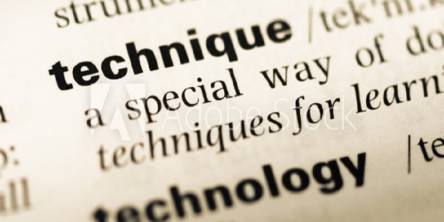Hello in Italian: Mastering the Art of Italian Greetings

Learning to greet someone in a new language is often the first step towards fluency. Understanding how to say hello in Italian is essential due to the language's melodic and expressive nature. Greetings in Italian may vary based on the time of day, the formality of the situation, and the region. Understanding the nuances of Italian greetings may help you connect better with native speakers and make a good impression. This post will explore the most common Italian greetings and their appropriate contexts.
Common Italian Greetings
Ciao: The Universal Greeting
"Ciao" is one of the most common Italian greetings. It is versatile and may be used in both formal and informal situations. Originally from the Venetian dialect, it means "hello" and "goodbye." While widely accepted across Italy, it is more casual and often used among friends and family members.
Buongiorno: Good Morning
"Buongiorno" translates to "good morning" and is used until the early afternoon. It is a polite greeting suitable for formal situations such as business meetings or addressing older people. Using "buongiorno" shows respect and consideration for the time of day.
Buonasera: Good Evening
"Buonasera" means "good evening" and is used from the late afternoon onwards. The greeting is appropriate for both formal and informal settings. Whether you are greeting friends or participating in a formal context, "buonasera" sets a courteous tone.
Buonanotte: Good Night
"Buonanotte" is reserved for bidding someone good night. It is typically used when parting ways at the end of the day. The phrase is often accompanied by a warm smile or a gentle gesture.
Salve: A Formal Hello
"Salve" is a formal greeting that may be used at any time of day. It is less common than "ciao" or "buongiorno" but still widely recognized. Using "salve" in a formal setting demonstrates respect and politeness.
The Nuances of Formal and Informal Greetings
Italian culture strongly emphasizes formality and respect, especially in greetings. Understanding when to use formal and informal greetings will enhance your interactions and show cultural sensitivity.
Formal Greetings
It is crucial to use formal greetings in formal situations, such as business meetings or when meeting someone for the first time. Phrases like "buongiorno," "buonasera," and "salve" are ideal. Additionally, using the person's title, such as "Signor" for Mr. or "Signora" for Mrs., followed by their last name, adds an extra layer of respect.
Informal Greetings
Informal greetings like "ciao" and "Buona Notte" are more common among friends, family, and peers. The greetings foster a sense of closeness and familiarity. In southern Italy, informal greetings are often accompanied by physical gestures like air kisses on both cheeks.
Regional Variations
Italy's rich cultural diversity means that greetings may vary significantly from one region to another. Northern Italy tends to be more formal, while southern Italy embraces a more relaxed approach to greetings.
Northern Italy
In northern Italy, greetings are typically more reserved and formal. Using "buongiorno" and "buonasera" is common, especially in professional settings. Handshakes are a standard form of greeting, and direct eye contact is important.
Southern Italy
In contrast, southern Italy is known for its warmth and hospitality. Informal greetings like "ciao" are widely used, and physical gestures such as two air kisses on the cheeks are common. The region values close personal connections and expressive body language.
Common Expressions and Their Meanings
Piacere di conoscerti
"Piacere di conoscerti" translates to "nice to meet you." The phrase is used when meeting someone for the first time. It conveys a sense of pleasure and formality, making it suitable for casual and formal introductions.
Da quanto tempo
"Da quanto tempo" means "long time no see." It is a friendly greeting used when encountering someone you haven't seen in a while. The expression is informal and often used among friends.
The Importance of Body Language
Body language plays a significant role in Italian greetings. Italians are known for their expressive gestures, which complement their verbal greetings. Here are a few key aspects of body language to consider:
Direct Eye Contact
Maintaining direct eye contact shows confidence and sincerity. It is crucial to making a positive impression in formal and informal settings.
Physical Gestures
Physical gestures, such as handshakes, air kisses, and hugs, vary based on the relationship and context. Handshakes are common in formal situations, while air kisses are typical among friends and family members in informal settings.
Conclusion
Understanding how to say "hello" in Italian and the nuances of various Italian greetings will significantly enhance your interactions and connections with native speakers. By using the appropriate greetings for different situations, you show respect for the Italian language and culture and make a lasting impression. Whether in northern Italy or southern Italy, mastering these greetings will enrich your experiences and make communication smoother.
You may confidently greet friends, colleagues, and strangers by learning the most common Italian greetings and their contexts. Knowing how to say hello in Italian, along with mastering both formal and informal greetings, will help you navigate various social settings with ease. Your interactions will become more meaningful and enjoyable as you continue to speak Italian fluently and appreciate its rich cultural heritage.
Frequently Asked Questions
How do you greet someone in Italian?
To greet someone in Italian, you can use "Ciao" for informal situations and "Buongiorno" for formal ones.
Do Italians say ciao as hello?
Yes, Italians use "Ciao" as an informal greeting for both "hello" and "goodbye."
What is the difference between ciao and Buongiorno?
"Ciao" is an informal greeting used among friends, while "Buongiorno" is a formal Italian greeting used to say "good morning."
Who says buongiorno?
"Buongiorno" is used by anyone in a formal context to greet someone in the morning or early afternoon.
Similar Articles
Does the child in your life speak more than one language? Do you notice them having trouble navigating between the two? How does bilingualism play into speech-language pathology?
Early exposure to English language learning provides you a world of intellectual and social potential. Although it's well known that English is a universal language, you might be surprised by the advantages of learning it at a young age. A child's future can be shaped by early exposure to English in unexpected ways, from confidence-boosting to cognitive development.
As we forge deeper into the digital era, AI language translation is rapidly becoming a pivotal force in global communication, creating unprecedented connections across cultures
If you are a healthcare provider or employed in the department, you are more likely than not to understand the significance of effective communication particularly in the context of medical information dissemination across various languages and cultures.
Spanish verbs Both the pillar of a language and the main obstacle to speaking it. Many students are lost during their learning, blocked by the Spanish conjugation, sometimes complex for an English speaker. To break the deadlock, these 10 tips are here to finally master the conjugation of this beautiful language, Spanish.
The translation process consists of understanding the meaning of a text written in a language of origin and transferring it to a target language while retaining the same meaning.
English is an international language and it has become important for everyone to learn and gain mastery over it because it offers plenty of advantages in one’s own personal and professional life.
Matters regarding legal aid translation are sensitive in that they don’t need any barriers caused by language problems, poor translations, or interpretations. The system of providing free advice about the law and practical help with legal matters for individuals who are unable or poor to pay for legal aid services is what we refer to as legal aid.
Discover why learning French is more than just a skill. From career boosts to travel ease, explore the practical perks and cultural richness of speaking French









